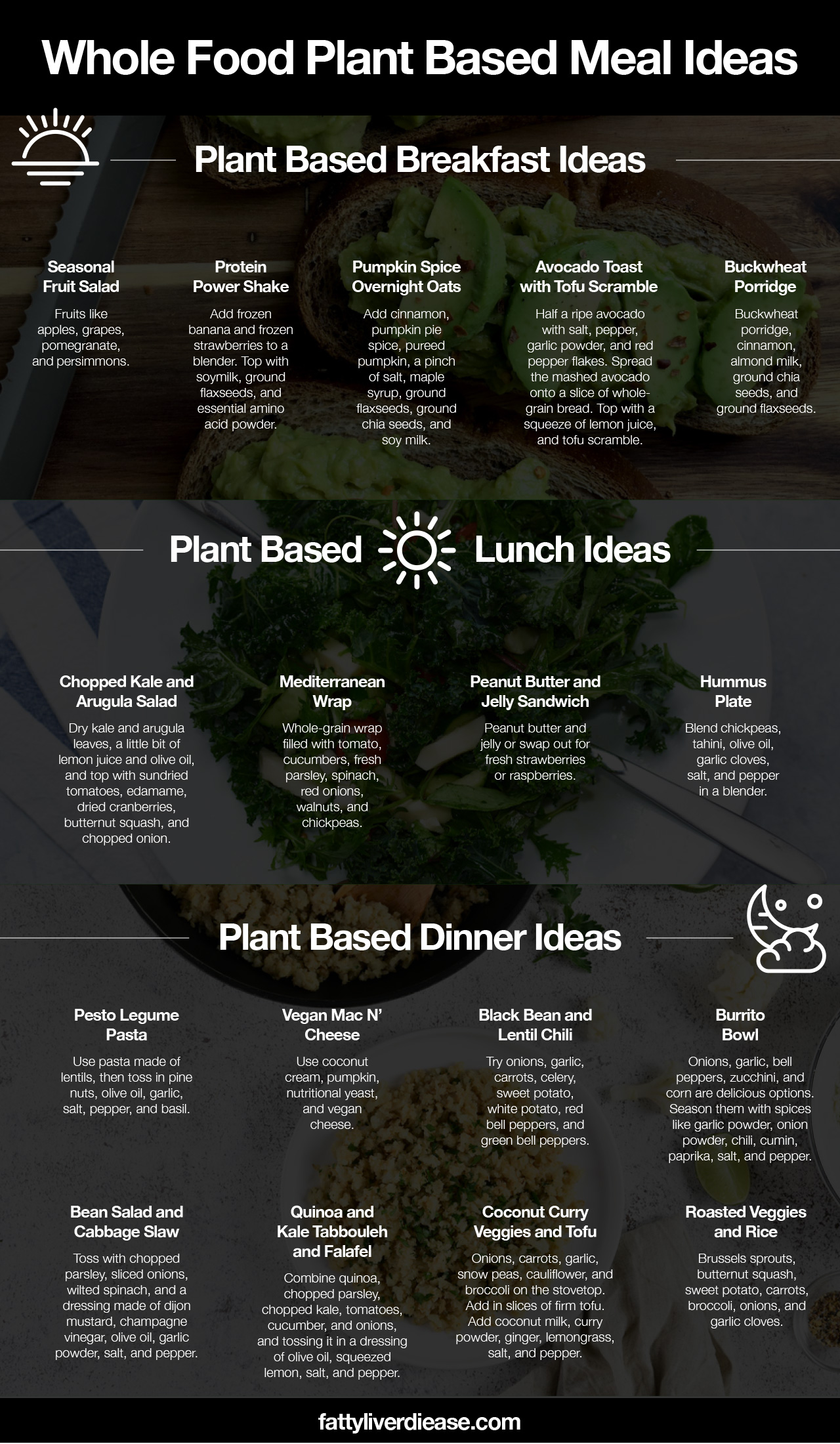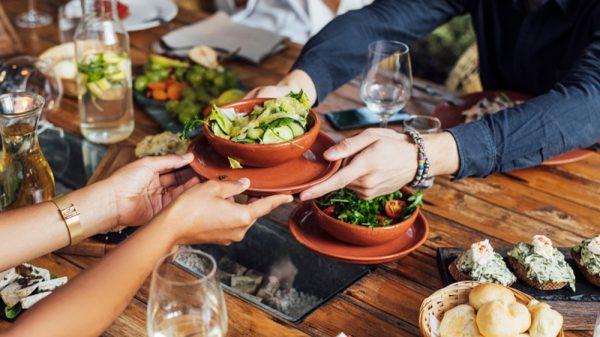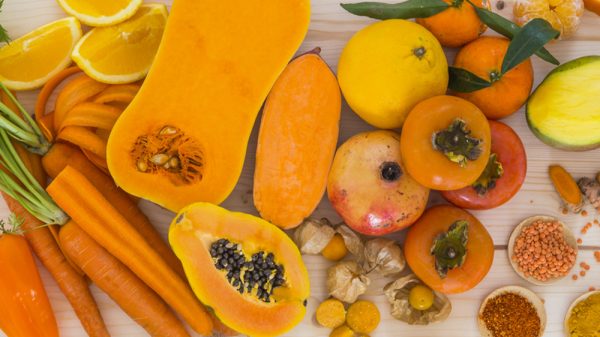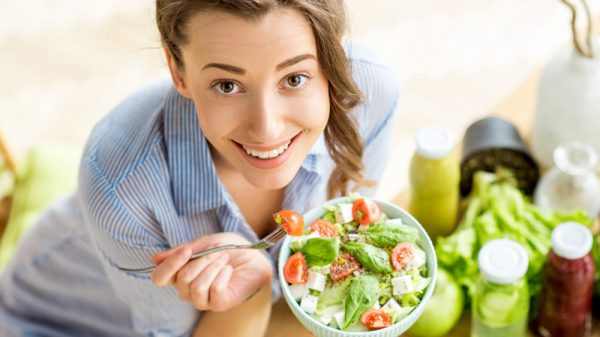When following a plant based diet, you probably already know that eating primarily whole foods is the healthiest way to go. However, eating whole foods requires preparing meals and ingredients from scratch. Here we provide you with whole food plant based recipes that are tasty, easy, and packed with nutrients.
If you are looking for flavorful and healthy plant based recipes that support your health, then you’ve come to the right place. Read on to find out more!
Benefits of a Plant Based Diet
Before we dive into healthy, vegan recipes, let’s first go through the benefits of a plant based diet of primarily whole foods.
What is a whole food plant based diet? This diet plan encompasses eating plant based foods that are unprocessed, such as whole grains, fruits, veggies, nuts, seeds, and soy products. Limit foods like meat replacements, vegan cheese, pastries, bread, and sweets. Even if these foods are plant based, highly processed vegan foods can still contain added sugar, preservatives, and other additives that are bad for your health.
Following a plant based diet of primarily whole foods has numerous health benefits. Eating mainly plants increases your fiber intake significantly, helping to balance the gut microbiome and reduce systemic inflammation.
A whole foods plant based diet also increases your consumption of fruits and vegetables. As a result, you are getting tons of antioxidants that support immune system function and fight against inflammation and oxidative stress in the body.
All of these factors help to improve your health by supporting weight loss and healthy metabolic function. There are tons of healthy vegan recipes for weight loss that support health and wellness. A whole foods plant based diet helps manage a variety of conditions like high cholesterol, high blood pressure, fatty liver disease, insulin resistance, and type 2 diabetes. The high intake of antioxidants, vitamins, and minerals on a plant-based diet keeps inflammation and oxidative stress low.
Plant Based Breakfast Ideas
Whether you’re a breakfast person or prefer to skip this first meal of the day, we have meal ideas to cover you. Here are a few plant based diet breakfast ideas.
1. Seasonal Fruit Salad
Fruit salad is a refreshing and light option for breakfast. It’s also an excellent choice for individuals who aren’t hungry in the morning and aren’t inclined to eat breakfast. Choose seasonal fruits to throw together a tasty fruit salad at any time of the year.
For example, summer fruit salad may include peaches, watermelon, cantaloupe, cherries, and pineapple. A fall fruit salad may include fruits like apples, grapes, pomegranate, and persimmons. All of these fruits are delicious on their own. However, if you want to dress up the breakfast salad a little bit, toss with a little bit of maple syrup, lemon juice, and crushed pecans.
2. Protein Power Shake
A shake is also an excellent option for individuals who don’t feel too hungry in the morning but need something quick and easy to get their day started.
Add frozen banana and frozen strawberries to a blender. Top with soymilk, ground flaxseeds, and your favorite vegan protein powder or essential amino acid powder. Blend until smooth, and enjoy.
3. Pumpkin Spice Overnight Oats
Overnight oats recipes are popular vegan breakfast options, for a good reason. Overnight oats take less than 5 minutes to prepare and are simple to prep for the entire week ahead. Plus, they are nutritious and packed with fiber and protein.
Pumpkin spice is a popular flavor for coffee and cakes, so why not try pumpkin spice oats? First, add a serving of oats to a sealable jar. Add cinnamon, pumpkin pie spice, pureed pumpkin, a pinch of salt, maple syrup, ground flaxseeds, ground chia seeds, and soy milk. Stir thoroughly, seal, and place in the fridge to soak overnight.
4. Avocado Toast with Tofu Scramble
This meal is for breakfast-lovers who wake up hungry and need something filling to sustain their morning. Avocado is a perfect topping for toast because it’s packed with healthy fats, vitamin E, and potassium. Mash half a ripe avocado in a small bowl with salt, pepper, garlic powder, and red pepper flakes. Spread the mashed avocado onto a slice of whole-grain bread. Top with a squeeze of lemon juice. For extra protein, prepare a tofu scramble by sauteing a serving of firm tofu in a pan with olive oil, garlic, turmeric, salt, and pepper. Serve over the avocado toast or as a protein-packed side dish.
5. Buckwheat Porridge
Buckwheat is an underrated grain that is packed with minerals, fiber, and antioxidants. To prepare buckwheat porridge, microwave cream of buckwheat with water until the porridge reaches a soft consistency. Mix in cinnamon, almond milk, ground chia seeds, and ground flaxseeds. Top with sliced bananas, crush walnuts, and a drizzle of maple syrup. For an extra decadent touch, enjoy with a dollop of coconut cream.
Plant Based Lunch Ideas
When preparing a vegan lunch, it’s often crucial for the meal to be portable, as well as nutritious and tasty. Here are a few vegan recipe ideas to prepare for lunch.
1. Chopped Kale and Arugula Salad
Salads don’t have to taste like rabbit food. Instead, you can prepare a filling salad that is rich in nutrients and flavor. Rinse and dry kale and arugula leaves, and chop them into bite-size pieces. Massage the greens with a little bit of lemon juice and olive oil, and top with sundried tomatoes, edamame, dried cranberries, butternut squash, and chopped onion.
If you are preparing your salad ahead of time and taking it to work or school, keep the dressing on the side and toss it together right before eating.
2. Mediterranean Wrap
A veggie-packed wrap is an easy and healthy lunch that you can take on-the-go. Prepare a Mediterranean-inspired wrap by filling a whole-grain wrap with a hearty salad prepared with tomato, cucumbers, fresh parsley, spinach, red onions, walnuts, and chickpeas. Top with lemon juice, salt, pepper, and a vegan version of tzatziki sauce.
3. Peanut Butter and Jelly Sandwich
This childhood classic is actually a nutritious and balanced lunch that is both simple and tasty. The only questionable ingredient in a peanut butter and jelly sandwich is the jelly, which is usually very high in sugar. Use jelly sparingly, or swap out for fresh strawberries or raspberries. You can quickly mash the fresh fruit before spreading on your sandwich. This way, you’ll be able to enjoy the sweet flavor plus extra fiber and without the unnecessary sugar.
Make sure to choose a whole-grain bread that contains fiber and protein. Steer clear of white bread and any bread that contains added sugar.
4. Hummus Plate
A hummus plate is a perfect snack or lunch option! Hummus is a nutritious dip that’s packed with protein and fiber. You can buy many healthy hummus dips at the grocery store, but it’s easy and cheap to make at home. Simply blend chickpeas, tahini, olive oil, garlic cloves, salt, and pepper in a blender. Pack your homemade hummus in a sealable container that you can take on-the-go. Bring along whole-grain pita wedges, carrot sticks, celery, tomatoes, cucumbers, and bell peppers for a perfectly balanced and light vegan lunch.
Plant Based Dinner Recipes
Here are a few dinner recipe ideas to keep your plant based diet regimen interesting!
1. Pesto Legume Pasta
Pesto is a classic pasta sauce that is rich and delicious. Many store-bought brands contain tons of parmesan cheese, and although tasty, they are not so healthy. You can prepare your own healthy version of pesto at home using pine nuts, olive oil, garlic, salt, pepper, and basil. Toss with pasta made of lentils or chickpeas for a protein-packed and fiber-filled meal.
2. Vegan Mac N’ Cheese
Going vegan doesn’t mean you have to give up your favorite recipes and comfort foods! It merely means you have to adapt them. Try preparing mac n’ cheese using coconut cream, pumpkin, nutritional yeast, and vegan cheese.
3. Black Bean and Lentil Chili
Chili is a hearty, warm dish that is perfect for chilly winter evenings. Traditionally, chili is often a meat dish packed with shredded or ground beef. However, the vegan version is just as good and healthier! Chili can also be prepared in large batches for the week ahead, or it can be frozen until you need it.
To prepare vegan chili, start by chopping and sauteing all of your vegetables. You can add whatever vegetables you like to your chili. Try onions, garlic, carrots, celery, sweet potato, white potato, red bell peppers, and green bell peppers. Cut all vegetables into small cubes and pour them into a large pot with olive oil. Saute until fragrant and soft, and keep in mind that the potatoes will not be fully cooked. Add brown lentils, several cups of vegetable broth, and spices like chili powder, garlic powder, cumin, smoked paprika, cayenne pepper, salt, and black pepper. Bring to a boil and then reduce to a simmer, allowing the potatoes and lentils to cook thoroughly.
Next, add jalapeno crushed tomatoes, tomato paste, black beans, and a bay leaf. Allow to simmer on low to allow flavors to meld. Serve over brown rice and top with shredded vegan cheese, dairy-free sour cream, and crispy corn chips.
There are many ways to adapt this recipe to fit your needs. You can choose different beans, such as cannellini beans, black-eyed peas, and kidney beans. Try experimenting with various vegetables, like corn, kale, and squash.
4. Burrito Bowl
A burrito bowl is an easy vegan dish that can be enjoyed for lunch or dinner. First, prepare your veggies by chopping and sauteing them in a drizzle of olive oil. If you want to prepare an oil-free version, simply saute your vegetables in a little bit of water. Onions, garlic, bell peppers, zucchini, and corn are delicious options. Once the veggies are cooked, season them with spices like garlic powder, onion powder, chili, cumin, paprika, salt, and pepper. In a separate pot, prepare brown rice. Mix a spoonful of vegan butter, chopped scallions, salt, and pepper into the rice.
Now, it’s time to assemble your burrito bowl. Pour a helping of rice into a bowl. Top with your vegetable mixture, chopped romaine lettuce, fresh tomatoes, avocado slices, cilantro, lime juice, salsa, and hot sauce. To pack your burrito bowl with extra protein, add seasoned tempeh or tofu to your meal.
You can use similar flavor profiles and ingredients to prepare tacos or enchiladas as hearty vegan meals.
5. Bean Salad and Cabbage Slaw
This meal is light and perfect for an easy summer meal. First, combine your favorite beans in a large bowl. Try green beans, chickpeas, kidney beans, and white beans. Toss with chopped parsley, sliced onions, wilted spinach, and a dressing made of dijon mustard, champagne vinegar, olive oil, garlic powder, salt, and pepper.
Prepare cabbage slaw by tossing sliced red cabbage with champagne vinegar, salt, brown sugar, pepper, and dried cranberries. You can enjoy this slaw either raw or cooked.
If you’re striving for a low-carb dinner, enjoy the bean salad and cabbage slaw alone. Alternatively, enjoy the beans and cabbage with a side of quinoa or millet.
6. Quinoa and Kale Tabbouleh and Falafel
This Mediterranean dinner is packed with healthy grains and protein. Prepare tabbouleh by combining quinoa, chopped parsley, chopped kale, tomatoes, cucumber, and onions, and tossing it in a dressing of olive oil, squeezed lemon, salt, and pepper. You can keep tabbouleh low-carb by using a higher proportion of greens and less quinoa.
You can prepare your own vegan falafel from scratch, or you can buy them pre-made. Just be sure that store-bought falafel fits your dietary needs. Enjoy falafel with the tabbouleh for a light dinner that’s high in protein and fiber. You can transform this dish into a healthy lunch by stuffing the tabbouleh and falafel into a whole-grain pita and topping with dairy-free tzatziki sauce.
7. Coconut Curry Veggies and Tofu
You can prepare this Thai-inspired dish on any busy weeknight. Coconut curry is a rich flavor that can be paired with any veggies in the fridge. First, saute veggies such as onions, carrots, garlic, snow peas, cauliflower, and broccoli on the stovetop. Add in slices of firm tofu. Add coconut milk, curry powder, ginger, lemongrass, salt, and pepper. Allow the combination to simmer and serve over brown rice.
8. Roasted Veggies and Rice
Roasted veggies are an easy and tasty dish that offers loads of fiber, vitamins, minerals, and antioxidants. Choose hearty veggies like Brussels sprouts, butternut squash, sweet potato, carrots, broccoli, onions, and garlic cloves. Toss with olive oil, oregano, basil, salt, and pepper and spread on a baking sheet. Sprinkle your roasted veggies with roasted cashews and with wild rice or quinoa.
Tips for Sticking to a Plant Based Diet
In the grocery store or when eating out, it can be challenging to stick to a plant based diet.
1. When Eating Out, Choose Wisely
Having dinner at a restaurant doesn’t mean that your diet has to go out of the window! In fact, many restaurants offer plant based options or are open to making adjustments to accommodate your needs. First, take a look at the vegetarian or vegan section of the menu. However, even the vegan and vegetarian menu may include unhealthy foods like fries. If you’re trying to stay completely on track, see if you can swap unhealthy sides for steamed vegetables or a side salad.
If there are absolutely no vegan or vegetarian options, work with what you have. Ask the server if it’s possible to leave out butter or cream when possible, or to have your salad toppings served on the side. However, at the end of the day, having a little cheese on your salad or butter on your vegetables beats eating a slab of steak or a giant cheeseburger any day.
2. Plan Your Meals or Meal Prep
It’s easiest to eat vegan when you plan your meals or cook a little in advance. Prepping entire meals can make it a cinch to grab your dinner after a long workday. Or, meal prepping may take the form of simply preparing grains or other meal components in bulk. For example, preparing quinoa or brown rice over the weekend decreases the time and energy required to prepare dinner on weeknights. You can even chop staple vegetables like carrots, onion, celery, and garlic that you use in lots of recipes.
3. Make Up for Possible Nutrient Deficiencies
When following a strict plant based diet, it is possible to get insufficient amounts of certain nutrients. Vegans may be prone to deficiency in vitamin D, calcium, and vitamin B12.
Vitamin D and vitamin B12 are difficult nutrients for the general population to obtain, not only vegans. However, following a plant based diet can make it even trickier. Vegans can obtain vitamin D from mushrooms and fortified almond milk, soy milk, and orange juice, though the vitamin D content of these items is not always high enough to meet the body’s needs. Getting a bit of sun exposure also stimulates the skin to produce vitamin D, but supplementation may still be the best option.
Vitamin B12 can be found in plant based items like tempeh, nutritional yeast, and fortified soy milk. However, supplementation is the best option because it is challenging to ensure that you regularly eat foods that contain vitamin B12.
Calcium is also present in vegetable-based foods like chia seeds, cabbage, broccoli, tofu, almonds, and chickpeas are good vegan sources of calcium. As with vitamin D and B12, you will likely benefit from a calcium supplement. Calcium is critical for facilitating the absorption of vitamin D.
Finally, it’s critical to ensure that you’re getting ideal ratios of essential amino acids from the proteins that you eat. Essential amino acids are indispensable compounds that the body utilizes to produce muscle tissue, neurotransmitters, hormones, enzymes, and all protein-based compounds in the body. To get an ideal balance of essential amino acids, consume a variety of plant based protein on a daily basis, like whole grains, nuts, seeds, beans, and soy products.
Talk to your health care provider or a registered dietitian about the best way to ensure that you’re obtaining enough of these nutrients.
4. Keep Easy Snacks on Hand
Sometimes hunger can get the best of us and cause us to fall off our diet plans. Having healthy, easy snacks within reach can help stave off those hunger pains without ruining your diet. Apples and peanut butter, walnuts and dried fruits, and bell peppers, and hummus are delicious and nutritious food pairings that should always be in your fridge.
5. Use Helpful Appliances
Use appliances like a blender, food processor, instant pot, and crockpot to make your life easier. For example, a food processor or blender can save you time when chopping vegetables for a stew. An instant pot can allow you to cook rice in a fraction of the time, and a crockpot can allow for a meal to cook itself while you go to work.
Whole Food Plant Based Recipes: Conclusion
When you hear terms like “whole food” and “plant based,” you may think of boring, tasteless dishes that leave you constantly hungry. However, a vegan diet based on whole foods can be vibrant, diverse, and filled with flavor! Plus, you can enjoy the health benefits of a plant based diet. Whole food plant based diet recipes can be both filling and nutritious. Dishes like pumpkin spice overnight oats, coconut curry, and burrito bowls are so tasty and filling that you won’t even miss animal products.
























